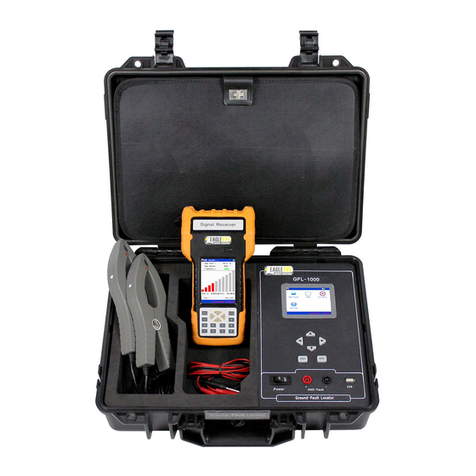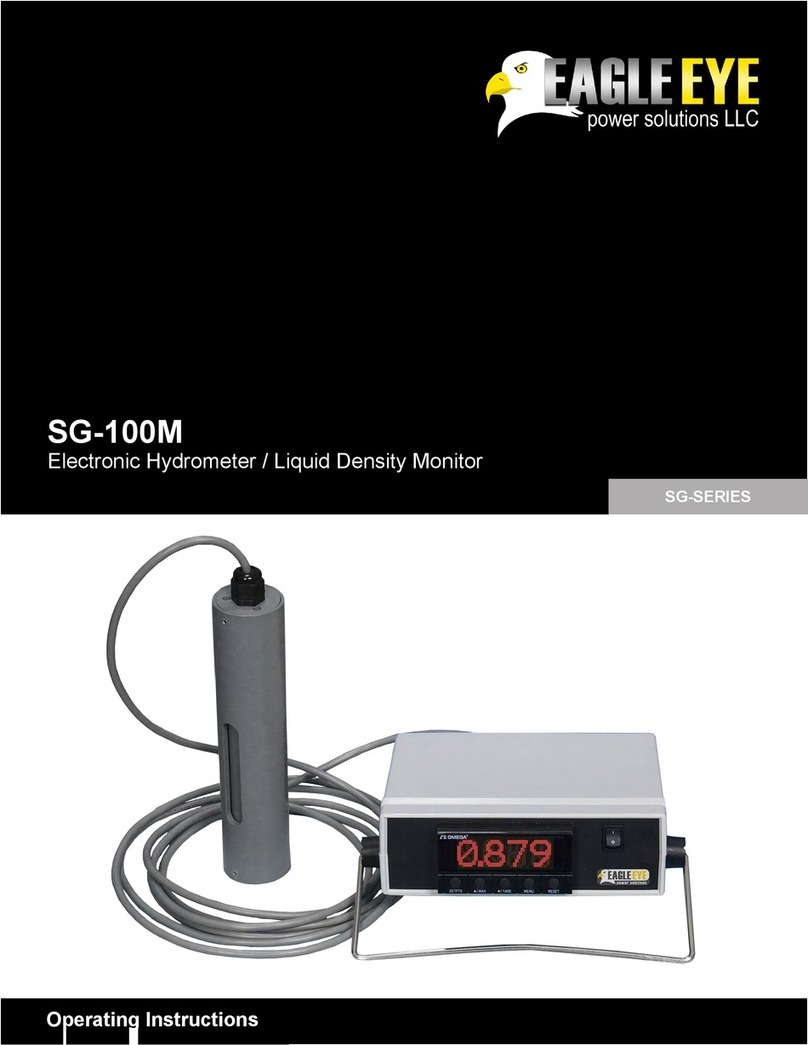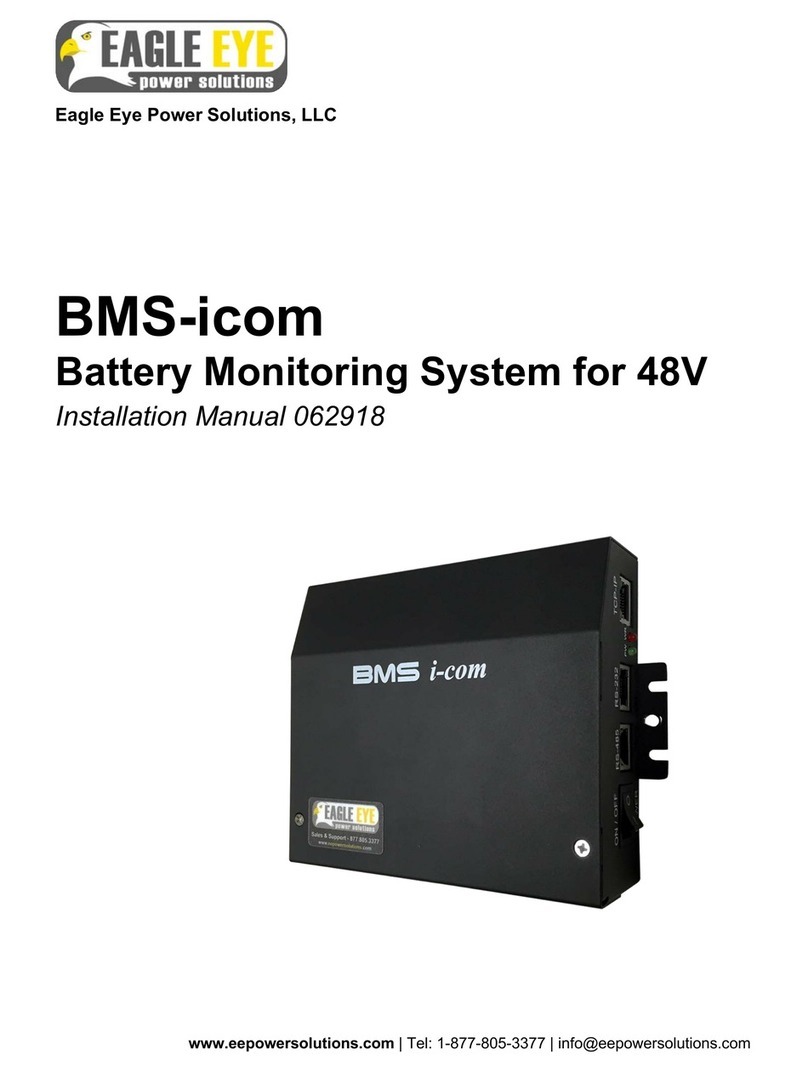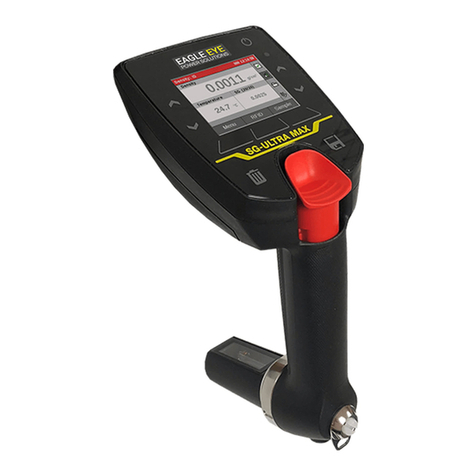BTM-Series User Manual
www.eepowersolutions.com
|
Tel:
1-
877-805-3377 | Fax: 1-414-962-3660 | in[email protected] | V1.0 US IFC608.3 (2010) requires that if a sealed battery (or batteries) operated in a single
premises contains a total of 50 gallons or over of acid the proprietor must install measures to
prevent thermal runaway.
System description
The thermal sensors are small, sealed units with two wires for connection to the adjacent
sensor and an LED which activates to indicate when the cell is in over-temperature. Each
thermal sensor is sealed to IP68 (water and dust proof) and the special gel-filled connectors
provided are also sealed against acid ingress, dust and gasses.
Each individual cell, monobloc or jar must have a sensor attached, to detect the
temperature of the unit. The sensors are connected in series, one wire of the sensor being
connected to a wire of the adjacent sensor.
The connector (above) is an Insulation Displacement Connection (IDC), gel-filled for
protection against corrosive atmosphere and Lloyds approved as the equivalent of a
soldered joint for adverse environments.
Apart from securing the neat wall mounted monitor, the entire installation may be carried out
with a small screwdriver and a pair of side-cutting pliers. Interconnections typically take
less than 20 seconds each. Longer interconnections, such as shelf to shelf and rack to rack
are simple to accommodate with standard 20SWG cable, and the IDC connectors provided;
cable lengths, within reason, are not sensitive. Sensor installation for a 40-jar battery will
typically take less than an hour. Several batteries in the vicinity of each other may be
connected in series to the same monitor. As the system is completely electrically isolated
from the battery, voltages and polarities are not an issue.
Once the sensors are connected, the two end wires are brought back to the system
monitor and connected to the two connectors in the system monitor marked ‘Sensors’.


































